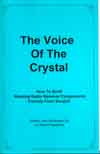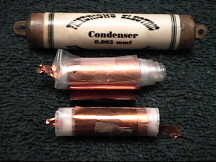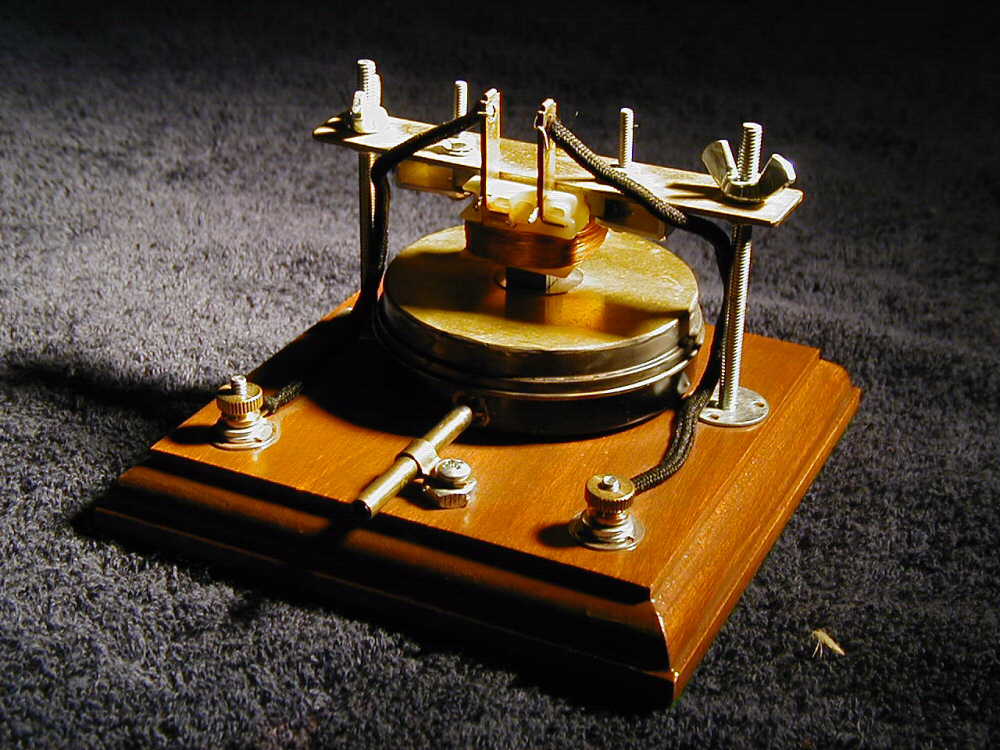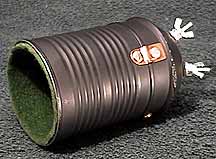H. P. Friedrichs (AC7ZL) Homepage
My Books
The Voice Of The Crystal
Gallery
Here, you can take a look at images associated with the projects appearing in The Voice of the Crystal.

This is an example of a so-called "basket" or "basket-weave" coil. The wire comprising the coil is wound in this fashion in order to reduce distributed capacitance
.
This instrument, called a "boom" detector, is featured in the book. It's comprised of various pieces of brass, including a gas fitting from which the crystal cup is fashioned. The crystal semiconductor material, in this case, is iron pyrite.

This is a picture of a small collection of tuning coils, including one wound on a glass jar, along with the spools of enameled magnet wire from which the coils are fashioned.

These are fixed condensers (capacitors) fashioned using techniques discussed in The Voice Of The Crystal. Electrode materials include both copper and aluminum foils, while dielectrics include wax paper and various plastic films. Condenser rolls are potted into cardboard housings with bee's wax.

This image shows some of the internal detail of the fixed condensers described above.

I call this instrument a "crank coil." To be precise, it's a double-tapped adjustable tuning inductance, which utilizes a novel arrangement of screw threads to allow precise positioning of the coil taps. Construction details for this coil appear in the book.

This, believe it or not, this is the driver for a set of home made headphones. To use it, the earpieces from a medical stethoscope are connected to the open tube which projects from the front of the instrument. It's quite sensitive.

This is another type of headphone described in The Voice Of The Crystal. This headphone is novel, because it's operation depends upon the movement of a piezoelectric crystal which was harvested from an old electronic cigarette lighter.

Headphones are one of those parts that "experts" tell you can't be fabricated at home using hand tools. Well, here's yet another headphone design using scrap magnets and coils of wire wound upon cardboard spools. The floor of a mushroom can is utilized as a diaphragm. The rear cover of the instrument is a die-cast fence post cap.

Here's another example of a radio component that "can't" be build at home, yet The Voice Of The Crystal shows you how. This is a very nice variable condenser (capacitor) used as part of a radio's tuning circuitry. The condenser blades are made from sheet aluminum, separated by an acetate dielectric.

(revised - 11/03/2005)



